[gallery id=1038]
Having emerged from the financial storm that hit Japanese manufacturers particularly hard, the four-wheel-drive specialist is seeking 30 new dealers to significantly grow its network and is shifting its sales priorities to its SUVs.
But can it reach its 10,000 target, a figure it has not achieved in the UK since the turn of the century, without the performance car so many people associate with the brand?
[gallery id=1038]
Almost two decades after the World Rally-winning Impreza Turbo drove its annual UK registrations to more than 10,000, Subaru is eager to prove it can reach those heights again.
Having emerged from the financial storm that hit Japanese manufacturers particularly hard, the four-wheel-drive specialist is seeking 30 new dealers to significantly grow its network and is shifting its sales priorities to its SUVs.
But can it reach its 10,000 target, a figure it has not achieved in the UK since the turn of the century, without the performance car so many people associate with the brand?
Subaru operations manager Paul Hegarty believes it can and said the Colin McRae fever of the mid-1990s was “an anomaly”.
“Subaru’s still a brand that many people don’t understand. They think of Impreza and rallying and motorsport and they think that’s all it is,” said Hegarty, who returned to Subaru in 2013 after 12 years at Daihatsu and Great Wall.
“Dealers have to go in the direction that we want to take the business, where the growth opportunity is, so that’s where we put the money” Paul Hegarty
Sales of Subaru’s current performance-oriented saloon, the WRX STi, made up a fraction of the 3,455 registrations the brand achieved in 2015.
“In 1999, we sold 7,000 Impreza Turbos. This year we’re going to do about 350 STi models. That’s 20 times less,” said Hegarty.
He described Subaru’s sales success in the UK during the 1990s as “extraordinary times”, but said they were “not really typical of the brand”.
“In 1996, we launched the Colin McRae and that started a massive rise in disproportionate Impreza volume.
“People were coming and buying the cars who we had never encountered before. We had been in the UK for 20 years by then, selling country cars to country people. Subaru was the best-kept automotive secret and then a couple of rally wins happened and all of a sudden it went mad.
“Many of those customers that came in and bought into the brand on the back of that left just as quickly as they came, but the legacy from that period lives on.
“We’re still doing what we always did: hunting, shooting, fishing – a rural person’s estate car.
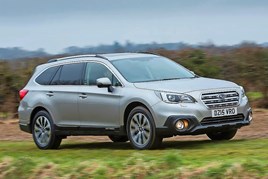
SUBARU OUTBACK
Billed by Subaru as the world’s
firstcrossover – a combination
of estate car and SUV – the
Outback was originally launched
in 1995. Last year saw a mid-life
update for the current model,
which starts at £27,995.
“In reality it’s quite a stable business. We don’t lose our customers to other brands because other brands just don’t deliver what they need. They can’t go and buy something else, so business just nicely trundles along, come boom or recession.”
Hegarty said the “bedrock of the franchise” in the UK has been symmetrical all-wheel-drive cars with off-road ability, but its focus now is firmly on the SUV sector – more than 1,200 of the Subarus registered in 2015 were Foresters, with Outback and the XV crossover following with about 800 registrations each.
Hegarty described the WRX STi, Levorg, Impreza and BRZ coupé as “niches within a niche brand”.
Upon returning to the brand in 2013, he said his first priority was to encourage dealerships to sell in the sectors where the brand saw potential for the greatest market growth in the UK, introducing clearly defined sales targets and a bonus scheme that rewarded SUV sales alone.
“I think a lot of people who had been in Subaru thought ‘I don’t know about that’, because four of our vehicles have flat margins. They can’t earn any bonus on BRZ, they can’t earn any bonus on Impreza, STI or Levorg,” he acknowledged.
“Dealers have to go in the direction that we want to take the business, where the growth opportunity is, so that’s where we put the money, and the bonuses are quite substantial. They could earn £1,800 on a car in addition to the standard margin.”
Maintaining a strong margin is key to Subaru’s UK sales strategy. Although Hegarty will not reveal what dealerships can expect in RoS terms, he said it had to be healthy due to the small volumes many businesses are trading, describing the personal service and lack of urgency in completing sales as “a boutique experience” for customers.
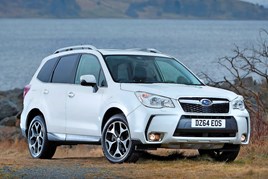
SUBARU FORESTER
Subaru’s most rugged offering,
the Forester SUV, also got a
mid-life update in 2015. Among
the line-up is the (£30,995) XT
Lineartronic, which serves up
237bhp and 258lb-ft of toque
from its 2.5-litre turbocharged
boxer engine.
One of Subaru’s most successful UK territories – its UK distributor, the IM Group, divides the nation into four separate portions – is Scotland and Hegarty said some of the 12 dealerships north of the Border were selling 140 cars a year.
In conjunction with a loyal customer base that appreciates Subaru’s ethic of putting engineering first, Hegarty said dealers can have a “good business” thanks to healthy margins and a strong aftersales operation.
“Aftersales is a huge focus because of the nature of the car. If you looked at a 10-year-old Subaru, it could very well still be in the dealership network and if you looked at the service
book it would be bosh, bosh, bosh, page after page, book after book of dealership stamps. There’s no brand like it in aftersales terms.
“One dealer told me he had handed a service book to a customer the other day with a bill for £1,800 and he had thanked him. He said if he’d done that with a bill of £150 at another franchise he had, he might have expected to be chased up and down.”
Hegarty said the introduction of an offer of three years’ free servicing for the XV crossover during 2014 had generated little response from customers, adding: “Our customers are a very specific set of people, buying the vehicle for its durability and off-road ability.”
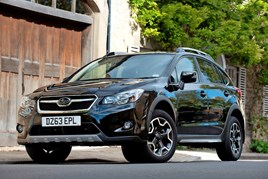
SUBARU XV
Subaru’s answer to the new breed
of SUV crossovers, XV prices start
at £21,995 for the two-litre petrol
model and £23,995 for the more
frugal boxer diesel.
‘Most of our customers buy their cars in cash’
While almost every other brand in the UK has seen registrations surge over the past number of years on the back of increased finance, especially PCPs, Hegarty said “we are not a conventional brand dealing with conventional customers”.
“They want the product and don’t care that much about a killer deal. We wouldn’t sell more Subarus if we suddenly started offering £2,000 off.
“We’ve made an effort to increase our PCP penetration and make our dealers more interested in it and we have retail offers and may give a £1,000 deposit contribution, but if you talk to the dealers they will say that most of their customers will buy their cars in cash.”
Hegarty said among the most popular finance offers is a 50:50 purchase, “i.e. they put 50% deposit and then pay the next 50% the following year, and we offer 0% interest-free funding, but that doesn’t drive a sale, it may simply help us close the deal”.
“I think we’re trying to be creative in offering our customers something that other brands might not offer that chimes with them and 50:50 is definitely something that chimes with Subaru customers because they already have the money in their high-interest building society accounts or stocks or wherever they choose to keep it.”
Fleet barely registers on Subaru’s sales charts, with base-line CO2 emissions of 140g/km (in the Impreza RC 1.6 Lineartronic) often being cited as a key reason, but Fuji Heavy Industries – the Japanese owner of Subaru – is said to be working on a new breed of lower-emission small-capacity, turbocharged engines.
Subaru’s exposure to the vagaries of the Japanese economy are one of the reasons it suffered in the early years of this decade.
Following the Japanese tsunami of March 2011, it suffered inevitable supply issues and was forced to close its plant as the clean-up operation got under way, leading to a struggle to meet the market’s global demand for cars.
The effect of the natural disaster on exchange rates was keenly felt for months to come.
As the Bank of Japan injected trillions of yen into the system in an attempt to make exchange rates favourable to importers, margins shortened and Toyota, Honda, Mitsubishi, Suzuki and Subaru were all among those losing out.
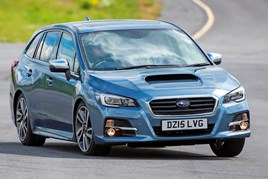
SUBARU LEVORG
Launched in 2015, the £27,495
Levorg sport tourer is the newest
addition to the Subaru line-up.
Indicative of the brand’s engine
downsizing, it features a 1.6-litre
turbocharged engine delivering
168bhp and 184lb-ft of torque.
Subaru 'has turned the corner'
Almost five years on, Hegarty believes Subaru has turned the corner and credits his dealer network with the improvement in its fortunes.
“We’ve been 12% up in 2013, 23% in 2014 and about 25% in 2015. Year-on-year we have good stable growth and the dealers are fundamental to that.”
However, those remarkable growth figures are from a low base – four years ago, Subaru recorded registrations of just 2,023 and its market share had plunged to a low of 0.10%.
Its dealer network shrank significantly too, from 103 franchised outlets in 2003 to 52 in 2013.
As sales began to progressively rise in 2013 and 2014 the number of Subaru dealers went from 52 to 66.
Its registrations fall and subsequent rise is also reflected in how dealers rate the value of the franchise, according to the NFDA Dealer Attitude Survey, with scores running from 4.5 in Winter 2012 to 7.1 in the most recent survey.
IM Group, which also looks after the Isuzu and Great Wall brands in the UK, oversees the operation of 70 Subaru franchised dealers (plus 12 authorised repairers) across the UK and Hegarty sees that number rising to about 100.
“We’d like more dealerships in Nottingham, Cardiff or Swansea. As much as our product appeals to a certain type of person, they might not want to travel 100 miles to a dealer.
“As a company we are obsessed by dealers because we’re a distributor so, in essence, we are a buyer and a seller of a product. I think we’re aware of the value that the dealers bring more than any other brand in the market.”
Start-up costs are small for a Subaru franchise, with CI less of a consideration than may be the case with other manufacturers, and even used car operations with an efficient aftersales operation would be considered, said Hegarty.
However, he acknowledges that attracting the right new franchises to the Subaru network is an ongoing process, and one that cannot be rushed.
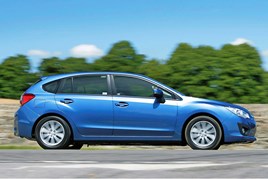
SUBARU IMPREZA RC
The entry-level to Subaru ownership,
the £17,495 Impreza RC is a four-
wheel-drive hatchback. The cleanest
Subaru, it emits 140g/km CO2
emissions and claims 46.3mpg
with the optional CVT transmission.
Hegarty said: “Our regional managers are travelling around the regions and talking to everyone – and I mean everyone – in locations that we are interested in. We’ll even speak to DPs who we know aren’t interested in a franchise because it might lead to a contact further down the line who is.
“We know a lot of other companies’ dealers better than they know them themselves. That’s our job, really. Knowing our dealers well and ensuring we have the right people on board is where a lot of this extra growth has come from.”
Hegarty said the decision to appoint a new Subaru dealer is “never rushed”, adding: “We spoke to one guy for seven years.”
Chris Graham, Subaru’s dealer development manager, reminded Hegarty that he had spoken to James Haworth at the Buckingham and Stanley Group in Cambridge for 20 years. “We’re patient enough to wait 20 years,” said Hegarty.
“We don’t want to rush to get an open point filled and then find that the dealership just doesn’t get it.
“What we want in a dealer is an appreciation for what Subaru is and that’s a niche brand with this technology, with this capability, that nobody else offers. It’s sold in this way, to these people, through these channels.
“Subaru strives to offer its customers a very personal, boutique service. If someone wants to be a Tesco Express and move a lot of cars fast then that’s fine, but they won’t be doing that with us.
“We’re not a company that says ‘sell these cars by giving the customer £5,000’.
“What we don’t want is what other people have seen in terms of growth: up, down, up, down, losing dealers, multi-franchising them, giving up on the fleet business and losing half their representation in the process.”
One of the key characteristics of the Subaru network is that many of its franchises are based in rural locations, including one of its most successful, the Cross Roads Garage at Shipston-on-Stour, Warwickshire.
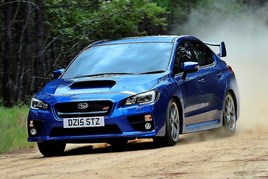
SUBARU WRX STi
The spiritual successor to the
Impreza Turbo of the 1990s, the
WRX STi is a four-wheel-drive,
four-door saloon delivering 296bhp
and 300lb-ft of torque from its
2.5-litre boxer four engine.
The countryside is where the brand’s target market can be found and while much of the brand’s UK marketing budget is spent in specialist publications such as Horse and Hound, Country Life and sponsoring events such as point-to-point equestrian events, Hegarty said the old-fashioned relationships that come with the slower pace of rural life are often the key to success for a dealer.
He said: “There’s an obsession with lead management at Subaru, but that doesn’t mean sales staff equipped with iPads and websites gathering data from customer searches, it means developing relationships the old-fashioned way.
“If we appoint a new dealer, one of the challenges that we have is to move their normal approach to marketing a car to one that’s marketing a Subaru. There’s no point sitting in the showroom all day long because that’s not where the customers are going to be.
“They are going to be at the local farmers’ market or gymkhana. Once you go to these places, the propensity of people to buy Subaru massively increases. You might find 20% of the cars at these places are Subarus.
“In many ways that’s the beauty of Subaru. While we might remain the best kept secret in the automotive industry to lots of people who still see us as a rally team, we know our audience well and they know us.”
Login to continue reading
Or register with AM-online to keep up to date with the latest UK automotive retail industry news and insight.


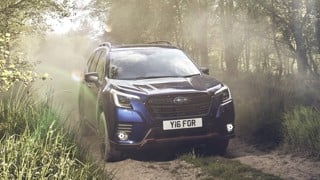
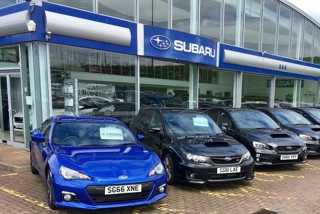

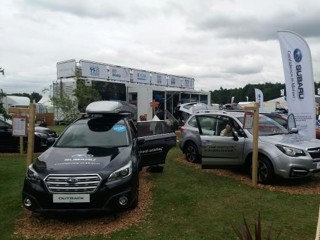













Jim Smith - 09/08/2016 22:56
Is this the same Paul Hegarty that made virtually identical statements about the "disappeared" Daihatsu franchise. The facts are as follows: 1) Subaru make good cars - no doubting this fact 2) They are priced much too highly in the UK versus other world markets 3) Who makes money - not the dealer network ! 4) A lot of dealers have tried Subaru - few can make it work 5) The strategy outlined here has been promoted by IM in the past and failed 6) What is the answer - SUBARU GB - NO IMPORTER - COMPETITIVE PRICING Current & past volumes show clear evidence that SUBARU if they want to have any presence in the UK must go direct!!